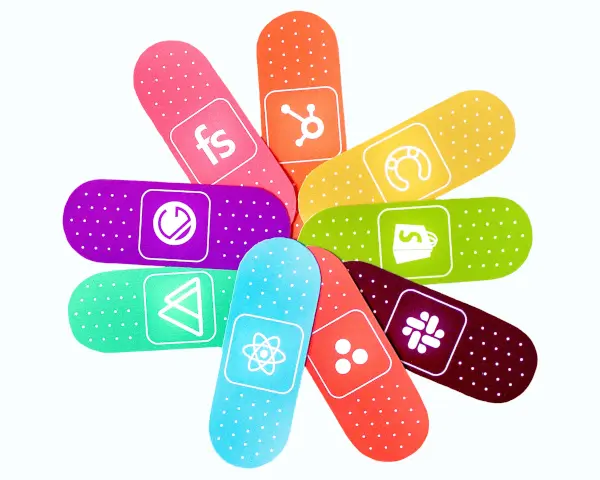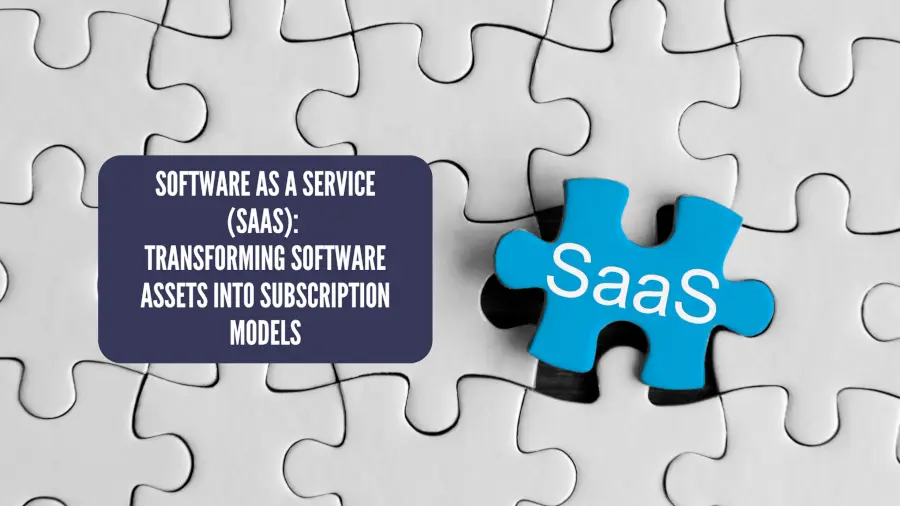The software realm, akin to a chameleon, perpetually adapts to the evolving needs of businesses. Amidst this ceaseless metamorphosis, Software as a Service (SaaS) emerges as a transformative force, reshaping the very fabric of software ownership. In this riveting exposition, we embark on a journey to unravel the intricate interplay between SaaS and software assets, dissecting the audacious leap from the realm of proprietary dominion to the enticing realm of subscription models. As we traverse the terrain of challenges and risks that accompany this tectonic shift, our aim is to illuminate the path for discerning businesses amidst a sea of possibilities. Embrace the winds of change, for SaaS, with its siren song of cost savings, accessibility, and ceaseless innovation, beckons enterprises into uncharted territories of software adoption.
- Understanding Software as a Service (SaaS)
- Transitioning to a Subscription-Based Model: Challenges and Risks in Transitioning to SaaS
- Assessing Software Asset Ownership
- Making an Informed Decision: Factors to Consider
- Conclusion
Understanding Software as a Service (SaaS)
In the arena of software, a captivating transformation has emerged, known as Software as a Service (SaaS). At its core, SaaS represents a paradigm shift in software delivery, where applications are hosted and provided to users over the internet, rather than being installed on individual machines. Meaning, you are not necessarily tied to a particular location in order to utilize the software. This formerly unique approach offers businesses a plethora of defining characteristics that set it apart:
- Scalability and Elasticity: SaaS liberates organizations from the constraints of traditional software, providing the ability to scale resources dynamically based on fluctuating demands. With SaaS, businesses can effortlessly accommodate growth or downsizing, optimizing their software usage in alignment with evolving needs.
- Accessibility and Ubiquity: A wondrous aspect of SaaS lies in its accessibility. By harnessing the power of the cloud, SaaS applications can be accessed anytime, anywhere, via a variety of devices. This ubiquitous accessibility grants businesses the freedom to collaborate seamlessly and empowers remote teams to thrive.
- Shared Infrastructure and Automatic Updates: SaaS eliminates the burden of infrastructure management, as software providers handle the hosting, maintenance, and security aspects. This shared infrastructure model enables automatic updates, ensuring that users always have access to the latest features and security enhancements without the need for manual installations.
With these unique characteristics, SaaS has become ubiquitous in the business world. It’s reach seems to have no end. Everything, and we mean everything, is going to a subscription-model promising:
- Cost Savings and Scalability: SaaS offers a compelling financial advantage by replacing hefty upfront costs with manageable subscription fees. This shift allows businesses to allocate resources more efficiently and avoid significant capital investments. Additionally, the scalability of SaaS enables organizations to effortlessly align software resources with their evolving needs, optimizing costs while accommodating growth.
- Accessibility and Flexibility: Embracing the ethereal cloud, SaaS liberates software from physical boundaries, granting users the freedom to access applications from any location and device with internet connectivity. This accessibility fosters collaboration and empowers businesses to adapt to the ever-changing work landscape. Moreover, SaaS solutions often provide flexibility in terms of customizable features and integration options, enabling organizations to tailor the software to their unique requirements.
- Continuous Updates and Enhancements: SaaS bestows upon businesses a perpetual stream of innovation. With the burden of updates lifted from their shoulders, organizations can revel in the joy of automatic updates and improvements delivered seamlessly by the SaaS provider. This constant evolution ensures that businesses stay ahead of the curve, benefiting from enhanced functionality, security patches, and performance optimizations.
The SaaS revolution has spawned a legion of triumphant companies that have reshaped industries and redefined the software landscape. Let us venture into the annals of SaaS success stories and witness the profound impact they have made:
- Salesforce: A trailblazer in customer relationship management (CRM), Salesforce pioneered the SaaS model, revolutionizing how businesses manage and nurture customer interactions. Its cloud-based platform enables organizations to streamline sales, marketing, and customer service, driving enhanced customer experiences and fostering sustainable growth.
- Shopify: Aspiring entrepreneurs and established businesses alike have found solace in Shopify’s SaaS-based e-commerce platform. Shopify empowers businesses to build and customize online stores, manage inventory, and facilitate seamless transactions, propelling the growth of countless online ventures.
- Slack: In the realm of team collaboration and communication, Slack has emerged as a beacon of efficiency. This SaaS platform provides organizations with a centralized hub for real-time messaging, file sharing, and collaboration, enabling teams to collaborate effortlessly, irrespective of geographical boundaries.
These illustrious examples merely scratch the surface of the transformative impact of successful SaaS companies. They have even created new categories for investors. The proliferation of this subscription model has hyper-segmented the software industry. For example, MarketingTech, BioTech, EdTech, FinTech, and more are now specializations within the software and technology space. Through these solutions, industries have been reshaped, and businesses empowered to unlock new levels of productivity, innovation, and success.
However, all is not ok in the world of SaaS for businesses. In fact, we have yet to even access the doors that lead us to the issues presenting themselves with this model. Let’s begin by reviewing the challenges, opportunities, and risks that lie in wait, guiding businesses towards informed decisions amidst the dynamic landscape of software asset transformation.

Transitioning to a Subscription-Based Model: Challenges and Risks in Transitioning to SaaS
Embarking on the voyage from proprietary software to Software as a Service (SaaS) is not without its perils. As businesses set out to discover novel solutions, they inevitably find subscription-based models with promises of lower costs and easy transitions. They also encounter a myriad of challenges and risks that are often never mentioned. Finding themselves navigating unfamiliar waters and requiring strategic decision-making. Some of the issues the SaaS subscription model brings with it are:
- Financial Considerations and Cost Management: Transitioning to a subscription-based model involves a shift from upfront capital expenditures to ongoing operational expenses. While SaaS promises cost savings in the long run, organizations must carefully evaluate the financial implications of the transition. Many software applications operate on consumption models that do not scale favorably with high usage rates. Some examples of costs that are rarely considered are not just the subscription costs, but migration expenses and the total cost of ownership (TCO) over time. Businesses must ensure that the financial ramifications of choosing a SaaS platform aligns with their budget and long-term sustainability goals.
- Data Security and Privacy Concerns: Entrusting sensitive data to external SaaS providers raises valid concerns about security and privacy. Many, many, many SaaS platforms DO NOT offer the security that would be expected by a business of any size. Organizations must conduct rigorous due diligence to assess the security measures implemented by potential SaaS vendors. This involves evaluating data encryption practices, vulnerability management, access controls, and compliance with relevant industry standards and regulations. Robust security measures and a strong commitment to data privacy are essential to safeguarding confidential information and maintaining the trust of customers and stakeholders.
- Integration and Compatibility Issues: Seamless integration of SaaS solutions with existing systems and workflows is crucial for a smooth transition, and almost nearly impossible to actually pull-off. Organizations must evaluate the compatibility of their legacy systems with the chosen SaaS offering. Remember, the phrase ‘integration’ can mean a lot of different things to a lot of different people.
Potential challenges may arise due to differences in data formats, integration complexities, or dependencies on proprietary software. Addressing these compatibility issues requires a meticulous assessment of integration requirements, proactive planning, and collaboration with the SaaS provider to ensure a seamless integration process.
For a smoother transition from Legacy or Proprietary software, companies should be vigilant by employing some of the following strategies and best practices.
- Thorough Evaluation of Software Requirements and Business Needs: A comprehensive understanding of software requirements and alignment with business needs is paramount. Organizations should conduct a thorough assessment of their current software ecosystem, identifying pain points, bottlenecks, and opportunities for improvement. This evaluation enables businesses to select a SaaS solution that addresses their specific needs and maximizes the potential for success. Considerations may include functionality, scalability, customization options, and the ability to integrate with existing tools and systems.
- Proper Planning and Resource Allocation: Successful transitions require meticulous planning and resource allocation. Organizations should develop a well-defined roadmap that outlines the sequence of migration, identifies key milestones, and allocates the necessary resources. This includes allocating time and personnel for activities such as data migration, system configuration, testing, and user training to name a few. Other considerations are the availability of the SaaS provider to provide the support your company may need. Effective project management and coordination are essential to ensure a seamless transition while minimizing disruptions to daily operations.
- Effective Change Management and User Adoption Strategies: The human element plays a crucial role in the successful adoption of SaaS solutions. Change management strategies should be employed to proactively address resistance, foster buy-in, and cultivate a culture of acceptance and enthusiasm for the upcoming transition. This may involve communicating the benefits of the new system, providing comprehensive training and support, and engaging stakeholders throughout the process. User adoption strategies should focus on empowering employees, encouraging feedback, and fostering a sense of ownership in the new SaaS ecosystem. Regular communication, training sessions, and ongoing support can facilitate a smooth transition and maximize user acceptance and productivity.
Careful evaluation of financial considerations, robust data security measures, addressing integration challenges, and employing effective change management strategies are just some of the things that are rarely discussed on sales calls.

Assessing Software Asset Ownership
Owning proprietary assets has long held a captivating allure for businesses seeking control and customization. It has certain safeguards, but there are also issues present here as well. As we delve into the assessment of software asset ownership, let us unveil some of the advantages that come with the ownership of proprietary software:
- Customization and Control: Proprietary software grants organizations unparalleled freedom to tailor applications to their unique needs. With full ownership, businesses can modify, enhance, and extend the software to align perfectly with their processes and workflows. This level of customization empowers businesses to differentiate themselves in the market and gain a competitive edge.
- Data Ownership and Security: Proprietary software affords businesses complete ownership and control over their data. This level of control ensures that sensitive information remains securely within the organization’s infrastructure. Companies can implement robust security measures, enforce access controls, and safeguard their data against external threats or breaches. The ability to maintain data on-premises offers additional peace of mind for organizations operating in highly regulated industries or dealing with sensitive customer information.
- Potential for Revenue Generation through Licensing: Owning proprietary software opens doors to potential revenue streams through licensing. Businesses can monetize their software assets by granting licenses to other organizations, enabling them to utilize the software in exchange for fees or royalties. This avenue presents an opportunity for additional revenue generation and can be particularly lucrative for software companies with innovative or specialized solutions.
While the allure of proprietary software ownership may be strong, it is crucial to navigate the shadows that accompany this path. Let us shed light on the limitations and drawbacks that businesses must consider:
- Upfront Costs and Maintenance Expenses: Owning proprietary software often entails significant upfront costs, including software development, infrastructure setup, and licensing fees. These initial investments can be substantial, particularly for small and medium-sized enterprises. Additionally, ongoing maintenance expenses, such as bug fixes, updates, and technical support, can further strain resources over time.
- Technology Obsolescence and Lack of Scalability: In the fast-paced world of technology, obsolescence is an ever-looming threat. Proprietary software may become outdated and incompatible with emerging technologies, resulting in limited scalability and reduced flexibility. As businesses grow and evolve, they may face challenges in integrating new systems or expanding the software to meet changing needs. This lack of scalability can hinder innovation and agility, potentially impeding business growth.
- Resource-Intensive Updates and Upgrades: As technology advances, updates and upgrades become a necessity to stay competitive and address security vulnerabilities. However, the responsibility for managing updates falls squarely on the shoulders of proprietary software owners. These updates often require dedicated resources, including time, personnel, and financial investments. Failure to keep up with updates can result in security risks, compatibility issues, and limited access to new features or functionalities.
By assessing the advantages, limitations, and drawbacks of proprietary software ownership, businesses can make informed decisions about the most suitable path for their software assets. The allure of customization, data ownership, and potential revenue generation must be balanced against the upfront costs, scalability limitations, and resource-intensive maintenance requirements. With a clear understanding of these factors, organizations can chart a course towards software asset ownership that aligns with their unique objectives and paves the way for sustained success.

Making an Informed Decision: Factors to Consider
When standing at the crossroads of software decisions, businesses must carefully weigh various factors to determine the most fitting path. Considerations specific to each organization play a vital role in this evaluation:
- Budget and Financial Resources: Financial considerations hold sway over the decision-making process. Assessing available budgetary resources is essential in determining the feasibility of investing in proprietary software or opting for a subscription-based SaaS model. Organizations must evaluate not only upfront costs but also ongoing expenses to ensure the chosen approach aligns with their financial capabilities.
- Scalability and Growth Potential: Contemplating future growth and scalability is paramount when considering software options. Proprietary software can offer greater control and customization, potentially accommodating unique business needs as they evolve. Alternatively, SaaS provides scalability and flexibility, allowing businesses to effortlessly adapt to changing requirements and rapidly expand their operations.
- Data Sensitivity and Compliance Requirements: The nature of data handled by an organization plays a significant role in the decision-making process. Businesses with highly sensitive or regulated data may lean towards proprietary software, where they can maintain direct control over security measures and compliance. Conversely, SaaS offerings may provide robust security frameworks and compliance certifications that alleviate concerns, allowing businesses to focus on their core operations.
To truly unravel the financial implications, a comparative analysis of the Total Cost of Ownership (TCO) serves as a compass, guiding organizations towards informed decisions:
- Initial Investment vs. Subscription Costs: Proprietary software entails significant upfront investments, including software development, licensing, infrastructure setup, and maintenance expenses. On the other hand, SaaS offers a subscription-based model, where businesses pay periodic fees, often based on usage or number of users. Evaluating the financial impact of these options is critical in understanding the initial capital outlay versus ongoing operational costs.
- Long-Term Expenses and ROI Analysis: The TCO analysis extends beyond the initial phase, considering the long-term expenses and potential return on investment (ROI). While proprietary software may require ongoing maintenance, updates, and support, SaaS providers typically cover these aspects within the subscription fees. By analyzing projected costs over an extended period, businesses can gauge the financial viability and ROI of each software ownership model.
Learning from the triumphs of others illuminates the path to success. Real-world examples and case studies provide valuable insights into successful transitions to SaaS or proprietary software:
- SaaS Success Stories: Case studies showcasing businesses that embraced the SaaS model shed light on the benefits it offers. These examples highlight improved scalability, streamlined operations, and cost savings achieved through flexible subscription models. From startups to large enterprises, SaaS has empowered organizations across industries to drive innovation, increase efficiency, and enhance customer experiences.
- Proprietary Software Pioneers: Examining organizations that opted for proprietary software ownership unveils the advantages it can bring. These case studies demonstrate how customization, control, and data security have enabled businesses to achieve unique competitive advantages. By building tailored solutions, organizations have transformed their operations, optimized workflows, and retained a stronghold over their software assets.
By evaluating business-specific considerations, conducting a comparative TCO analysis, and drawing insights from real-world examples, organizations can make informed decisions that align software choices with their strategic objectives. The compass of financial prudence, scalability, and data sensitivity must guide businesses towards the most suitable path, ensuring a smooth voyage towards software success.
Conclusion
In the ever-evolving landscape of software solutions, the decision between embracing Software as a Service (SaaS) or owning proprietary software assets carries significant weight. As we near the end of this exploration, it is crucial to reflect on the key takeaways that can guide businesses in making informed decisions.
By understanding the definition and characteristics of SaaS, organizations can grasp its potential to revolutionize their software landscape. The benefits of cost savings, scalability, accessibility, and continuous updates offered by SaaS can empower businesses to stay agile, competitive, and adaptable in an ever-changing market.
However, the path to SaaS is not without its challenges and risks. Financial considerations, data security concerns, and integration complexities demand careful evaluation and risk mitigation strategies. Organizations must navigate these challenges by conducting thorough assessments of their software requirements, allocating resources wisely, and embracing effective change management strategies.
On the other hand, the allure of proprietary software ownership should not be dismissed. The advantages of customization, control, and potential revenue generation through licensing can be enticing. Yet, businesses must carefully weigh the upfront costs, maintenance expenses, scalability limitations, and resource-intensive updates that come with proprietary software.
To make an informed decision, businesses need to consider factors specific to their operations. Budgetary constraints, scalability requirements, and data sensitivity play a crucial role in shaping the software ownership landscape. Comparative analyses of the Total Cost of Ownership (TCO) shed light on the financial implications, helping organizations gauge the long-term expenses and potential ROI.
Real-world case studies and examples provide invaluable insights, showcasing successful transitions to SaaS or proprietary software. Drawing inspiration from these pioneers can inspire organizations to embark on a path that aligns with their objectives, harnessing the power of technology to drive growth and success.
Ultimately, the decision between SaaS and proprietary software is not one-size-fits-all. It demands a nuanced understanding of business needs, financial considerations, and growth aspirations. By carefully evaluating these factors, organizations can navigate the complex sea of software choices, ensuring that their software assets become catalysts for innovation, efficiency, and competitiveness.
As businesses set sail towards the future, guided by insights and knowledge, they can embrace the transformative power of software solutions, whether through subscription-based models or proprietary ownership. The journey may be challenging, but with foresight, strategy, and a clear vision, organizations can navigate the waves of change and steer towards a software landscape that propels them to new heights of success.
